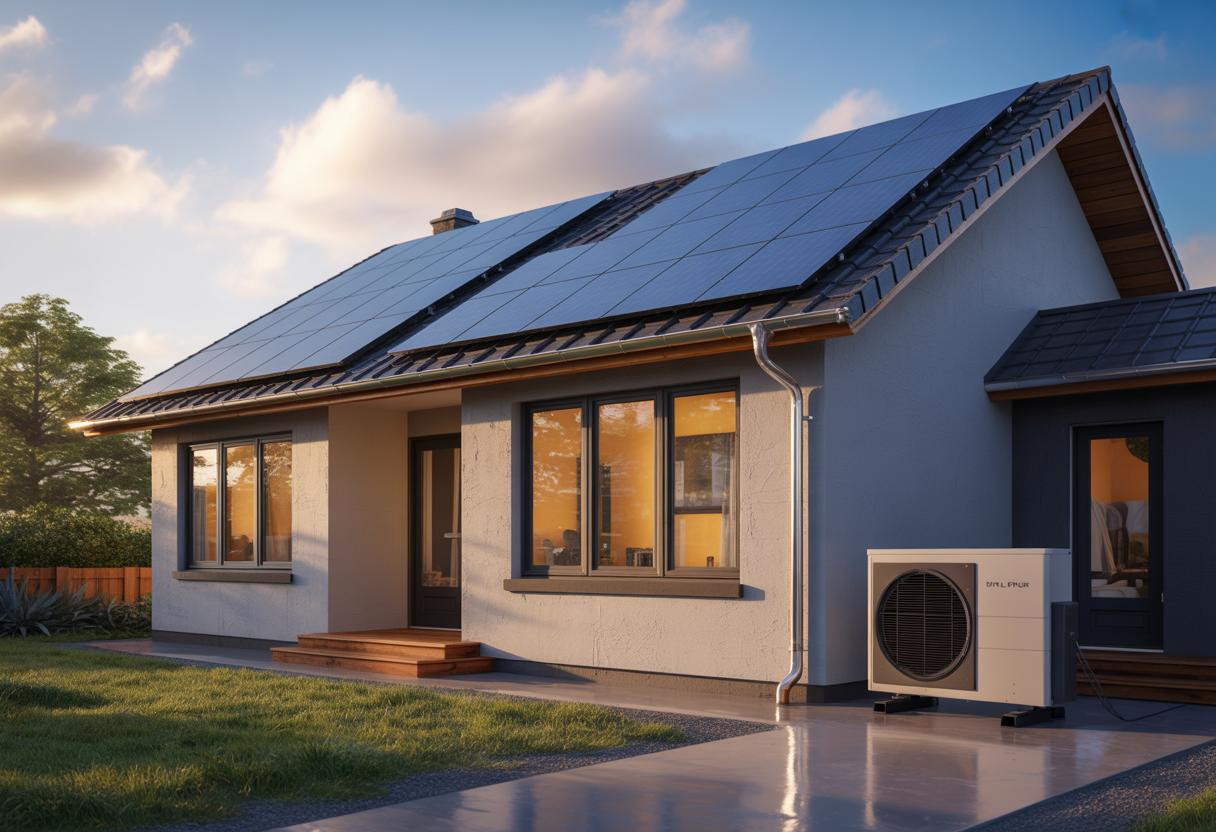If you’re curious about slashing your energy bills while boosting your home’s value, six strategic improvements can deliver $1,200+ in annual savings while qualifying for up to $3,200 in federal tax credits through 2032. These aren’t just theoretical benefits—homeowners nationwide are experiencing dramatic cost reductions through targeted upgrades that pay for themselves within 3-7 years.
Why these six improvements dominate the market right now
The energy efficiency landscape shifted dramatically in 2025, with federal incentives creating unprecedented opportunities for homeowners. The Energy Efficient Home Improvement Credit now allows annual claims rather than lifetime limits, fundamentally changing the economics of home upgrades.
Heat pumps lead the pack with coefficient of performance ratings of 2-4, meaning they extract 2-4 units of thermal energy per unit of electricity consumed. Solar installations achieve 18-22% efficiency rates, while geothermal systems reach remarkable COPs of 3-5 in suitable regions.
What’s particularly compelling is how these improvements work synergistically—homeowners combining multiple upgrades often see compound savings exceeding 40% on their energy bills.
The financial mathematics that make these improvements irresistible
Heat pumps deliver the highest immediate impact
Despite upfront costs of $15,000-$30,000, heat pumps qualify for $2,000 annual tax credits and typically reduce heating and cooling costs by 15-30%. In moderate climates, homeowners recover their investment within 5-8 years through utility savings alone.
The technology has reached maturity, with dual-fuel systems automatically switching between electricity and backup heating based on outdoor temperatures, optimizing both comfort and cost.
Solar panels offer unlimited tax credit potential
Unlike other improvements with annual caps, solar installations qualify for 30% tax credits with no upper limit under the Residential Clean Energy Credit. A typical $20,000 system generates $6,000 in immediate tax savings while reducing electricity bills by 10-20% annually.
Modern panels maintain 85-90% efficiency after 25 years, making them essentially a quarter-century energy dividend for homeowners.
Windows create the most overlooked savings opportunity
Triple-pane windows with U-factors as low as 0.15 dramatically outperform single-pane alternatives (U-factor 0.5). The $600 annual tax credit helps offset installation costs of $8,000-$15,000 for whole-home replacement.
What surprises most homeowners is how new windows reduce HVAC system strain, extending equipment life by 3-5 years while cutting energy consumption by 5-10%.
Strategic implementation that maximizes your investment returns
The counterintuitive approach involves prioritizing improvements based on your home’s specific energy profile rather than following generic recommendations. Professional energy audits, which qualify for $150 tax credits, reveal where your home loses energy most dramatically.
Smart homeowners are discovering that proven savings strategies that accelerate home improvement funding can help build the capital needed for these upgrades faster than traditional saving approaches.
Geographic considerations matter enormously—geothermal systems excel in regions with suitable soil conditions, while solar performs best in high-insolation areas. Heat pumps work optimally in moderate climates but struggle in extreme cold without backup systems.
Practical steps to capture maximum benefits before 2032
Timing your improvements strategically
Current tax credits extend through 2032, but proposed legislation could terminate them by 2025. Acting within the next 18 months ensures access to full incentive amounts while avoiding potential policy changes.
Similar to how financial planning strategies for long-term investment returns require careful timing, energy improvements benefit from strategic sequencing.
Combining improvements for compound benefits
Installing energy-efficient windows before upgrading HVAC systems allows for smaller, less expensive heating and cooling equipment. This sequencing approach can save $3,000-$8,000 on total project costs.
Water heater upgrades ($1,000-$3,000 upfront, $600 credit) and smart thermostats create additional layers of efficiency that complement major improvements.
Why acting now delivers the greatest long-term value
These six improvements represent more than cost savings—they’re investments in future-proofing your home against rising energy costs and climate regulations. With tax incentives potentially disappearing and technology costs stabilizing, the current window offers optimal risk-adjusted returns for homeowners committed to long-term value creation.
